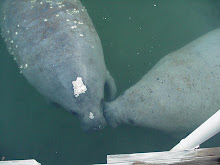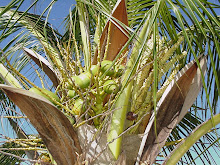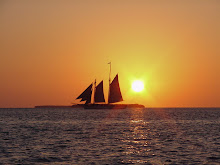After the meeting we all got on a trolley that would take us to visit some of Tallahassee's sites.

This building is now on the De Soto site. The Gov. John Martin House called Apalachee (1865) and one time home of Gov. William Bloxham (1881-1885). It is now a museum about De Soto, the Apalachees and Gov. Bloxham.
When they were building this house they discovered the remnants of De Soto's camp which was built upon an Apalachee Indian village site. The Apalachees who had lived there were tired of being attacked by De Soto and his men, so they burnt their village and abandoned it. We learned that Tallahassee means "abandoned fields" in the Apalachee language.
Back onto the trolley and onto Florida A & M University (FAMU). FAMU was originally founded in 1887 by Gov. Bloxham as the State Normal and Ag College for Colored Students. It is still largely made up of African-American students, but non-black students attend too.
While at FAMU we visited the Meek/Eaton Black Museum and Archives that is housed in a Carnegie library built in 1908 (see below).
 The museum was full of FAMU and African-American memorabilia. When Andrew Carnegie wanted to build one of his libraries in Tallahassee he said it must be open to all people no matter what color they were. The white people (remember it was 1908 and in the Deep South) said absolutely not. So he built it on the campus of FAMU. Later the whites built their own library in town.
The museum was full of FAMU and African-American memorabilia. When Andrew Carnegie wanted to build one of his libraries in Tallahassee he said it must be open to all people no matter what color they were. The white people (remember it was 1908 and in the Deep South) said absolutely not. So he built it on the campus of FAMU. Later the whites built their own library in town.  From FAMU we trollied to the campus of FSU. We stopped at bronze statues of FSU's first black undergraduate, Maxwell Courtney (1962-1965 B.A.), first black Homecoming Princess, Doby Lee Flowers (1970), and first black to wear an FSU athletic uniform (baseball), Doby's brother, Fred H. Flowers (1965-1969 B.A., 1975 M.S.).
From FAMU we trollied to the campus of FSU. We stopped at bronze statues of FSU's first black undergraduate, Maxwell Courtney (1962-1965 B.A.), first black Homecoming Princess, Doby Lee Flowers (1970), and first black to wear an FSU athletic uniform (baseball), Doby's brother, Fred H. Flowers (1965-1969 B.A., 1975 M.S.).


On the grounds were replicas of the buildings that were there during the 17th century.
 The interior.
The interior.



 The church.
The church.
 After the tour we had lunch in the Mission's museum building. We had to eat quickly because we had more stops coming up on the trolley tour. Our next stop was a Goodwood Museum and Gardens.
After the tour we had lunch in the Mission's museum building. We had to eat quickly because we had more stops coming up on the trolley tour. Our next stop was a Goodwood Museum and Gardens. The Goodwood plantation house was built by slave labor in 1830. We were given a very abbreviated tour of the house. Very beautiful. I wish we could have seen the gardens as well but we did not have time.
The Goodwood plantation house was built by slave labor in 1830. We were given a very abbreviated tour of the house. Very beautiful. I wish we could have seen the gardens as well but we did not have time.Our next stop was the Museum of Florida History. The Colonel and I hit the gift shop/bookstore and did not tour the museum as our time was very limited there too. When time is short we always opt for the bookstores of museums.
Our last trolley stop of the day was still upcoming...The Old Capitol (the one we could see from our hotel room window).

 The building now houses a museum of Florida's political history. The Capitol is as beautiful inside as it is outside. I would have loved to have spent more time there, but again we were on a tight schedule.
The building now houses a museum of Florida's political history. The Capitol is as beautiful inside as it is outside. I would have loved to have spent more time there, but again we were on a tight schedule.In 1824 Tallahassee was chosen as the site for Florida's Territorial Capital because it was the halfway point between the two region capitals, St. Augustine in the east and Pensacola in the west (The British, when Florida was under their rule, 1763-1783, had divided Florida into two separate regions). Four hundred miles separated the two capitals and moving the capital to Tallahassee made it easier to do government business between the regions. Eventually Spain wrestled back Florida only to finally give the entire Florida Territory to the U.S. in 1821. Florida became the 27th state in March of 1845.
We once again boarded the trolley and headed for the hotel. We would have a couple of hours until our next conference meeting at 6:30 PM. It would be a two hour meeting, then off to bed to rest up for a busy day four.





































No comments:
Post a Comment